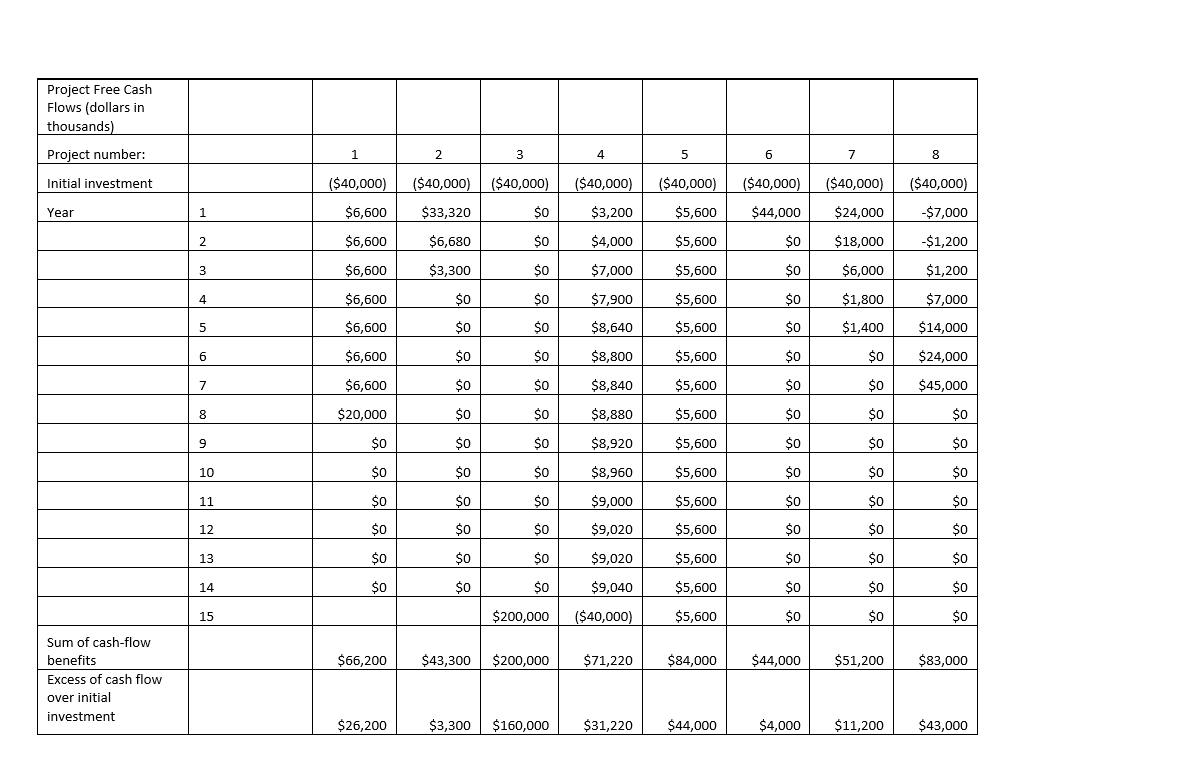Question
IF you can Answer them also by showing the calculations with Excel sheet, would be great dear please with showing the way of calculating and
IF you can Answer them also by showing the calculations with Excel sheet, would be great dear please with showing the way of calculating and the formulas
You are the capital-budgeting analyst for Dubai Holding Co. which is considering investments in the eight projects listed in the table below. The chief financial officer asked you to rank the projects and recommend the four best that the company should accept.
In this assignment, only the quantitative considerations are relevant. No other project characteristics are deciding factors in the selection, except that management has determined that projects 3 and 4 are mutually exclusive.
All the projects require the same initial investment, $40 million. Moreover, all are believed to be of the same risk class. The weighted-average cost of capital of the firm has never been estimated. In the past, analysts have simply assumed that 8 percent was an appropriate discount rate.
To stimulate your analysis, consider the following questions:
- Can you rank the projects simply by inspecting the cash flows? Show your ranking?
| rank | project | Net present value (NPV) |
| 1 | 3 | |
| 2 | 5 | |
| 3 | 8 | |
| 4 | 4 | |
| 5 | 1 | |
| 6 | 7 | |
| 7 | 6 | |
| 8 | 2 |
- Explain the 5 studied quantitative methods (concept, formula, merits, and demerits) and give your opinion which one is the most appropriate.

Step by Step Solution
There are 3 Steps involved in it
Step: 1

Get Instant Access to Expert-Tailored Solutions
See step-by-step solutions with expert insights and AI powered tools for academic success
Step: 2

Step: 3

Ace Your Homework with AI
Get the answers you need in no time with our AI-driven, step-by-step assistance
Get Started


